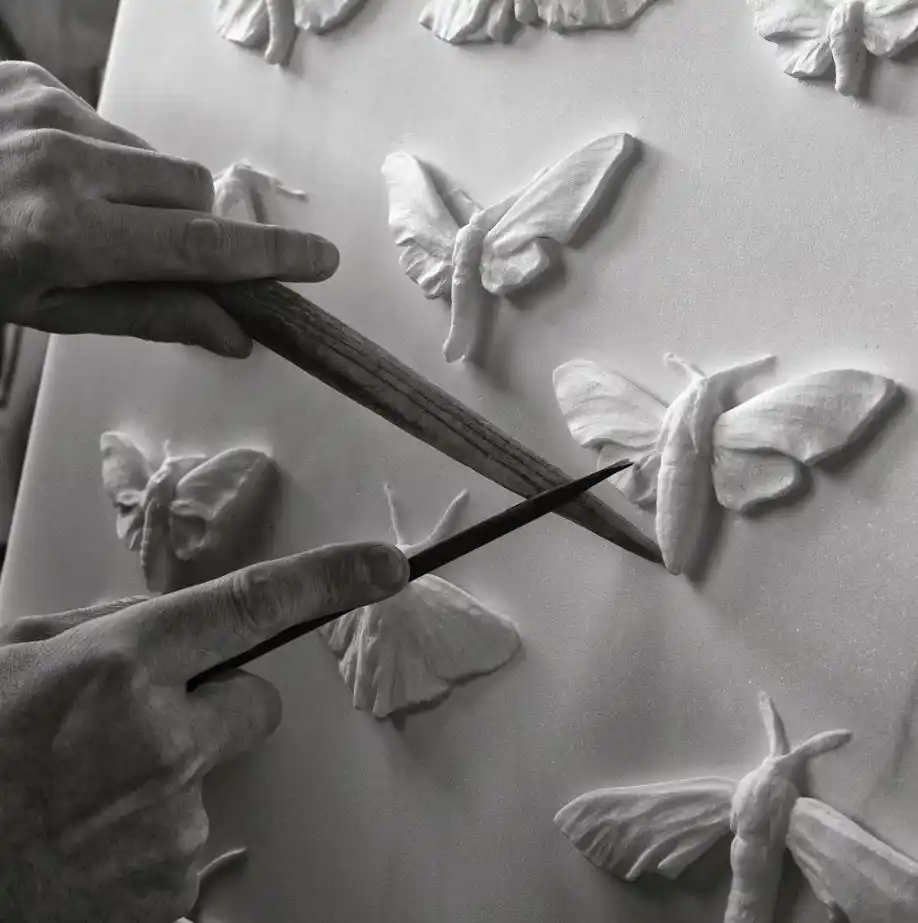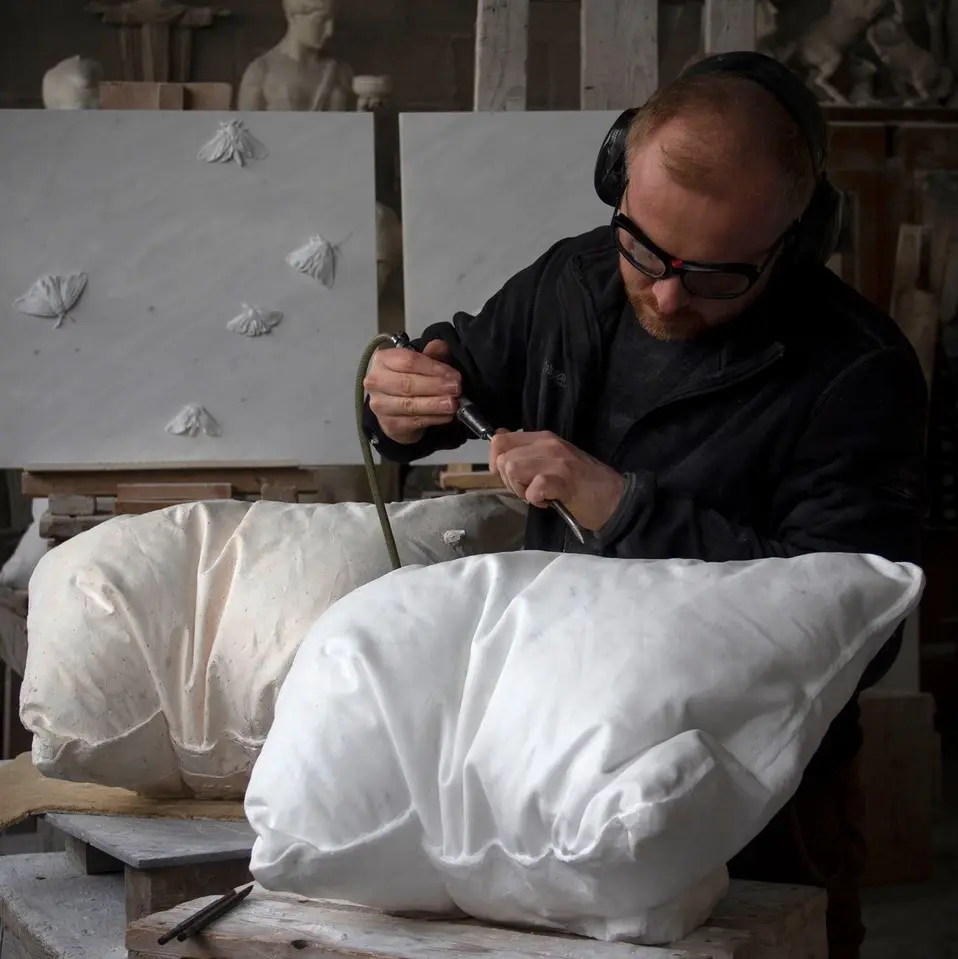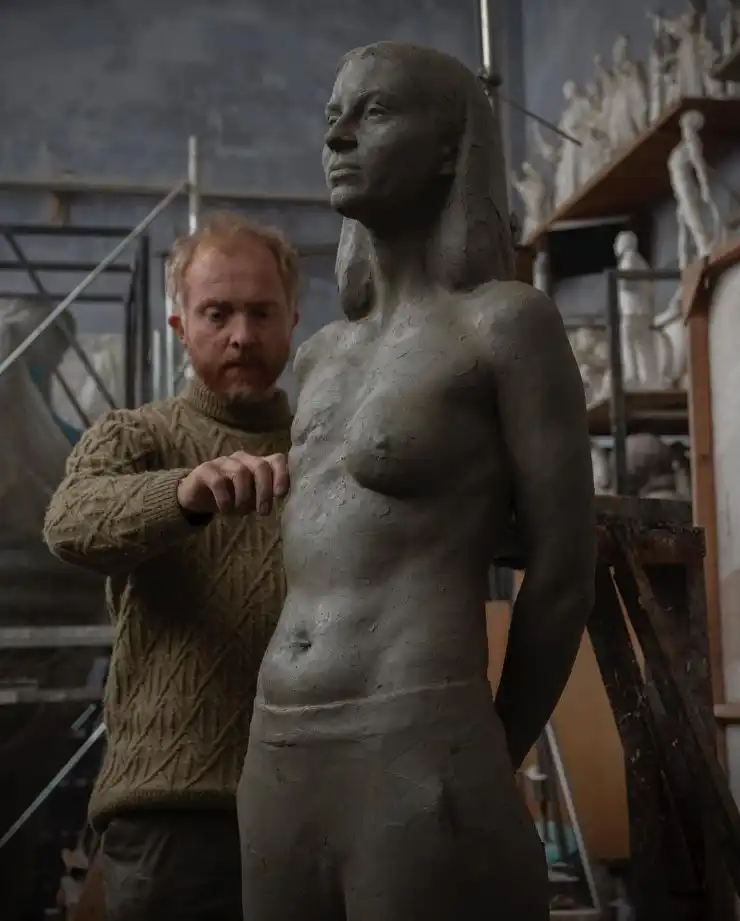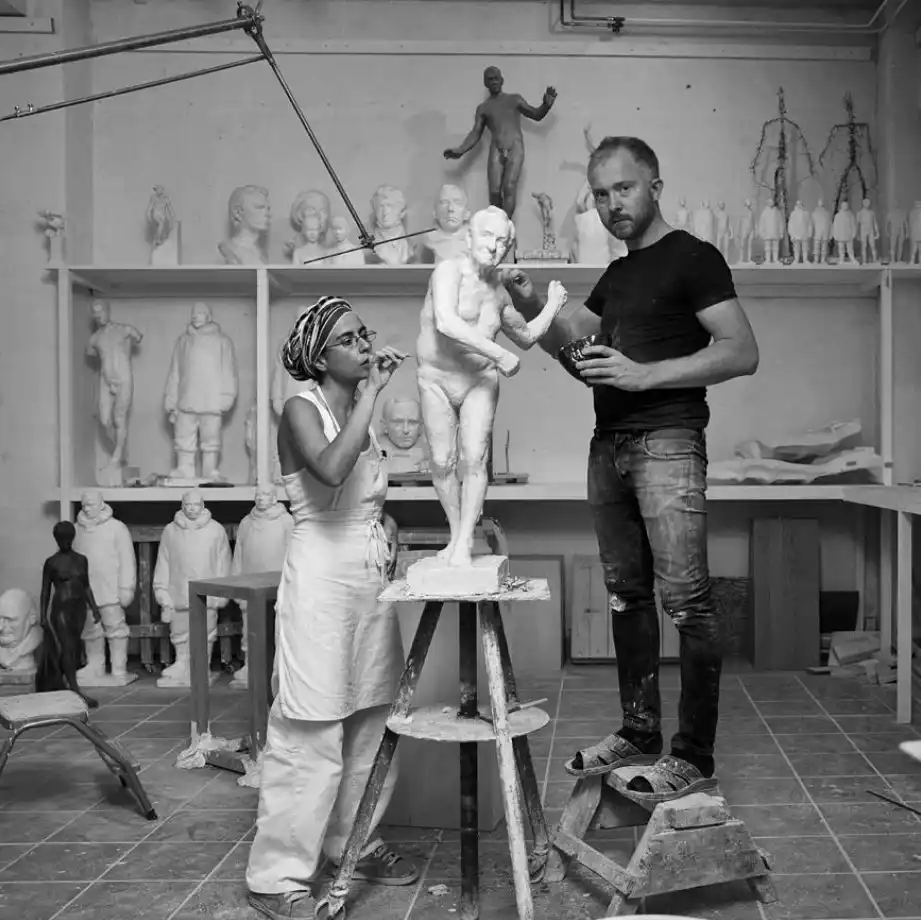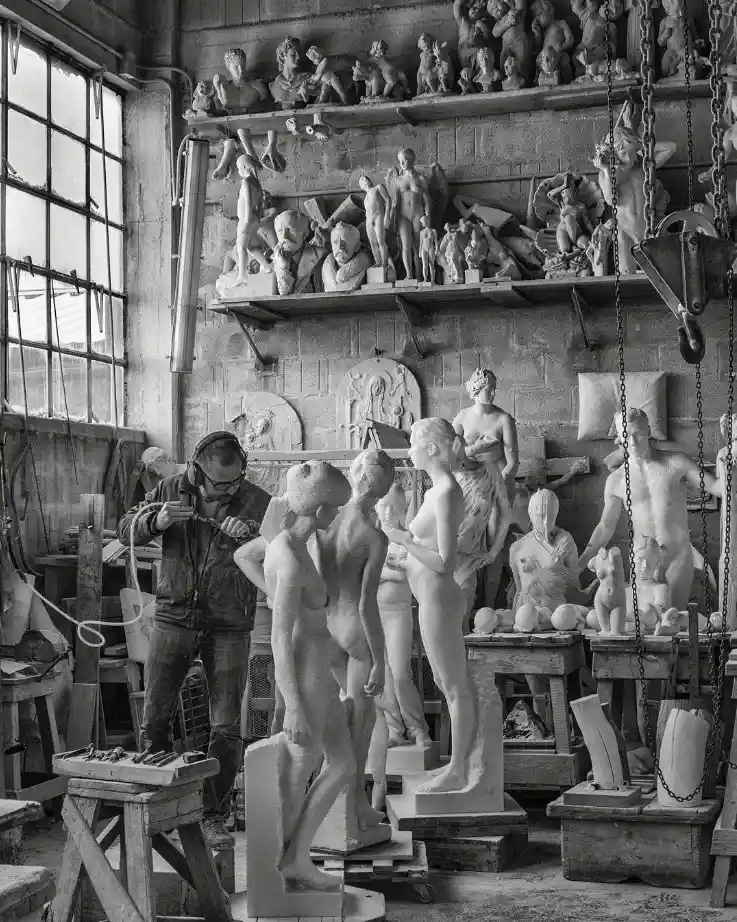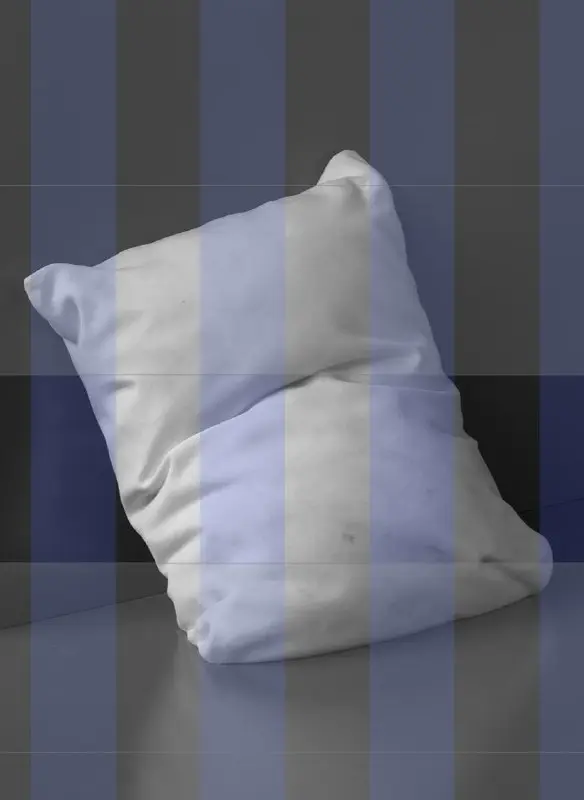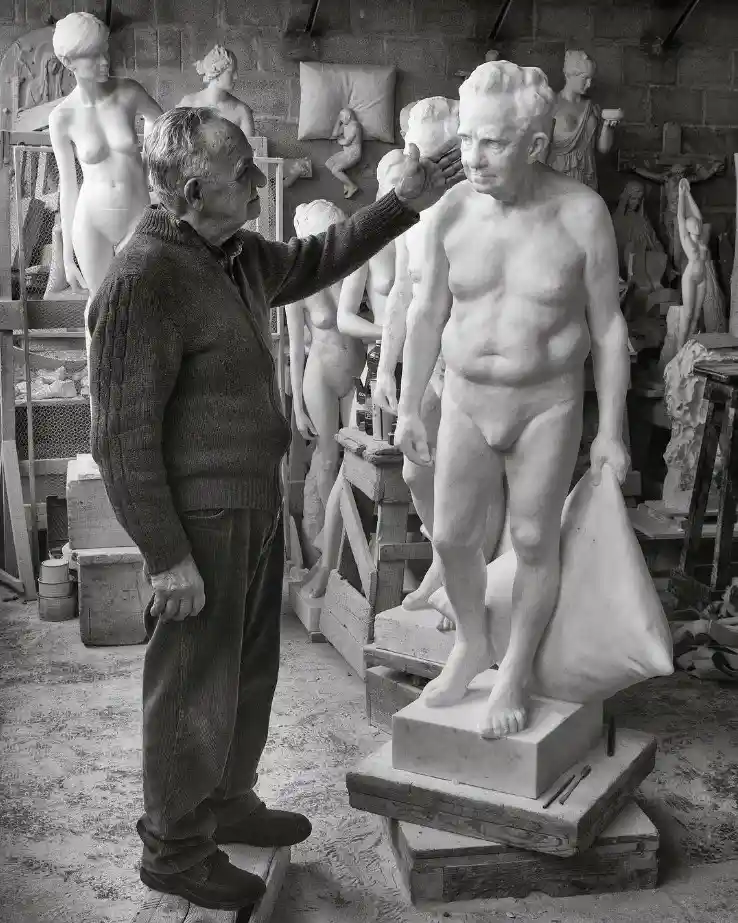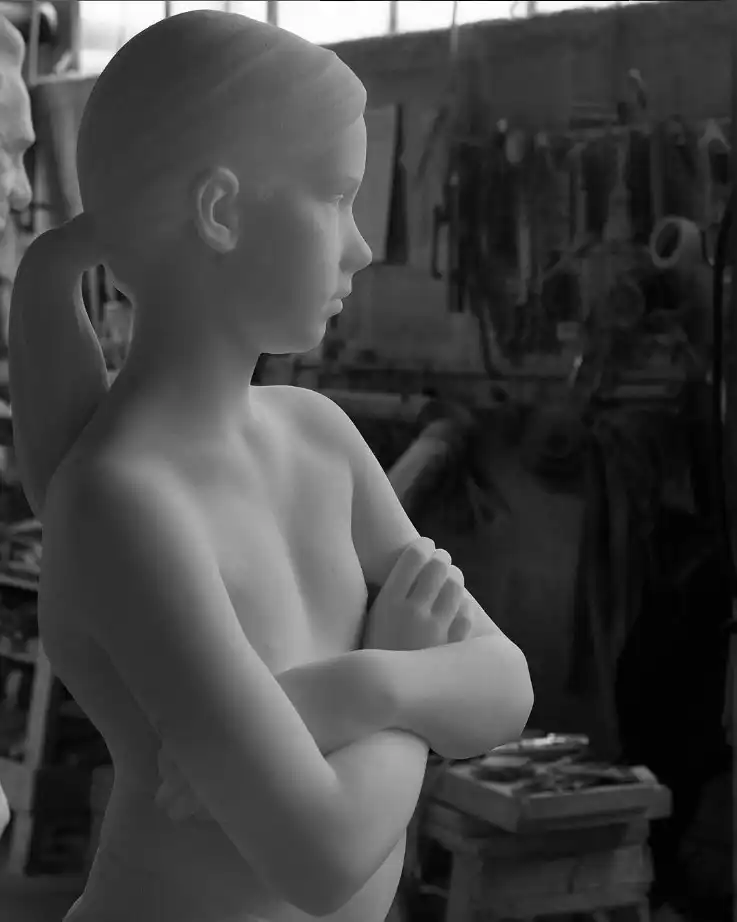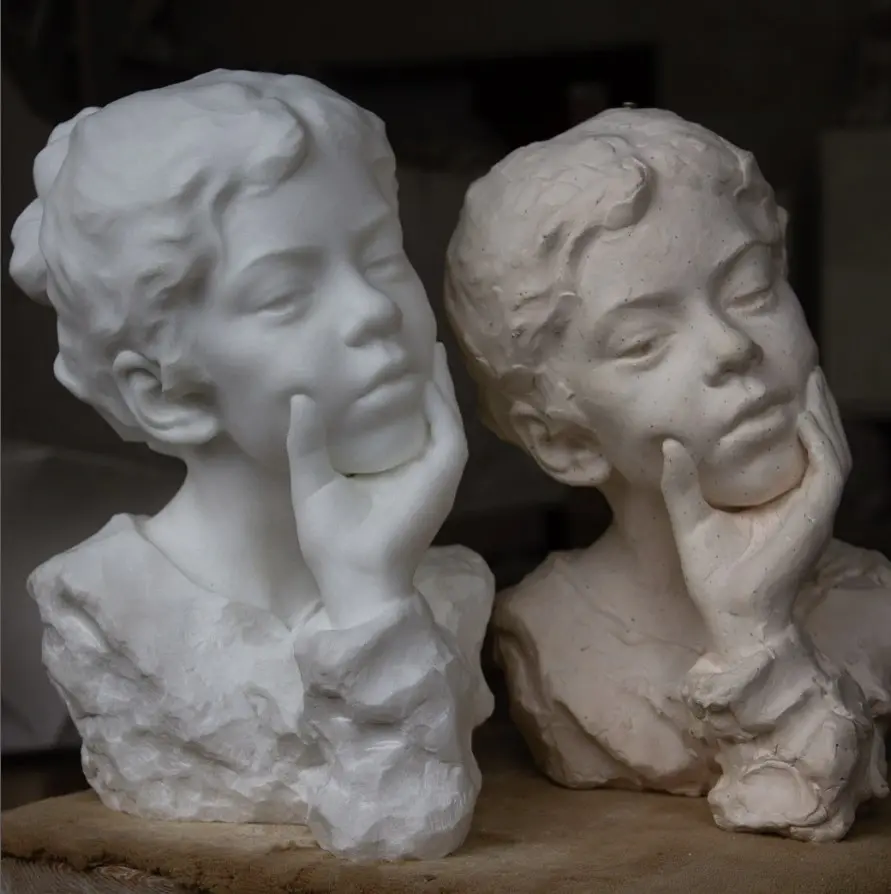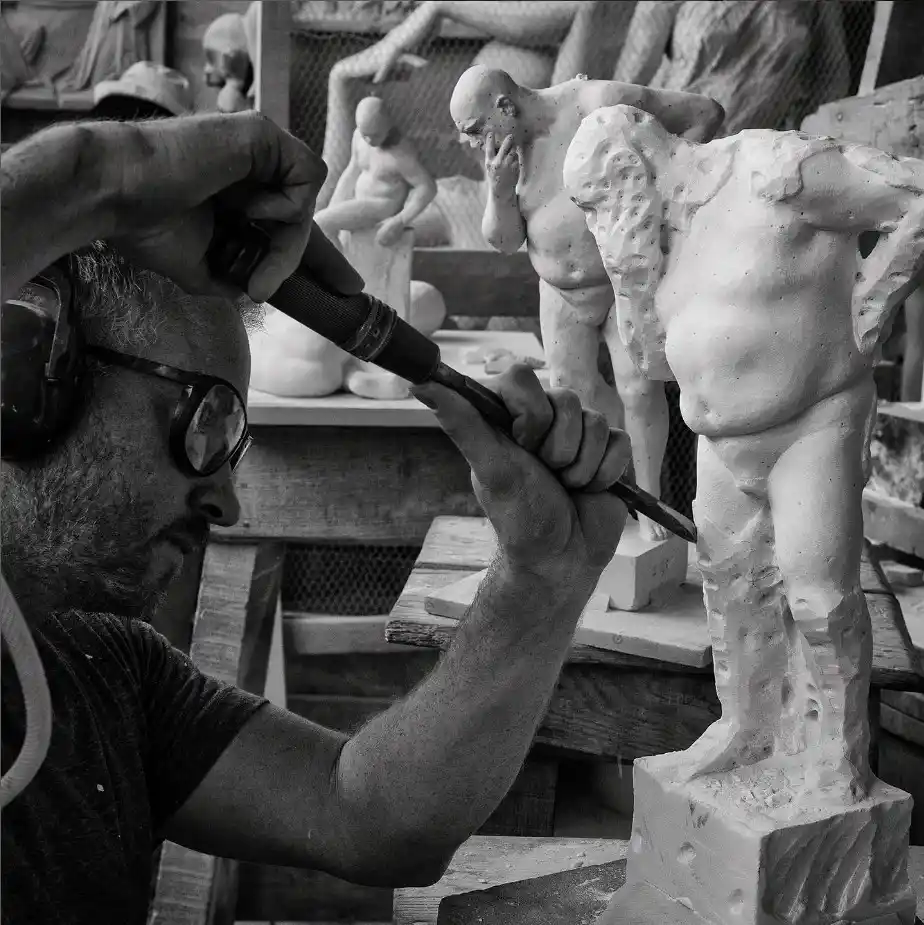If, when you say the word “marble”, images of elegant sculptures immediately pop up in your imagination, know that without noticing it, you also fell in love with this amazing material.The hero of our interview today creates not only amazing sculptures of people from marble, but also moths, birds and even pillows!Håkon Anton Fagerås is a Norwegian sculptor. However, he is known not only for his impeccable sculptures. Fagerås has designed three coin faces for Norges Bank, the central bank of Norway.Who is this amazing man, why did he once choose marble and how does he see the future of sculpture? We will talk about all this and more in our interview today!
All the statues and figurative sculptures I saw as a kid felt kind of alive, sometimes almost invisible and forgotten in public spaces, but to me almost breathing, even the bad ones. Wanting to try, I felt like I could do it better, thinking how hard could it be? Turns out it was quite difficult. I started out as an artist, as an apprentice in a painter’s studio. In the studio next by there was a sculptor working, he taught me the basics of sculpting.
I one day thought my pillow looked like marble. The pillow is there in your most private and intimate moments, present from conception to death. Some of life’s saddest and most beautiful moments are spent on a pillow. To me that makes it the perfect memento mori, a playful one though, not a dark and depressing one.
Ideas often start as quick pencil drawings, followed by tiny plasticine 3d sketches. This makes it easier to imagine what the sculpture can look in full size. I then model the sculpture in clay. I always use real models to some extent, sometimes a pillow, sometimes a person posing. The clay sculpture is cast in plaster and sent to the bronze foundry or the marble studio. Most of my pieces I do in marble. Carving a marble sculpture is a slow process, I usually have an artisan do the roughing out. I’ve been working with Marco Giannoni, an Italian marble artigiano, for 24 years, he taught me everything about the craft, does the initial part of the carving, and has been truly invaluable for me.
My artistic project has been quite consistent, I always try to improve, to gradually change and develop, both the artistic content and my sculpting skills. Reforms, not revolutions. My sculptures have become more realistic the last few years, maybe it’s time to turn that tide a bit. Very few artists the last 150 years did the actual carving of their stone sculptures themselves (even if they pretended that they did), artisans usually did all the work. Today it’s even easier to produce a marble sculpture, 3D technology can do much of it for you. But some of us will always insist on the magic of slowly creating a sculpture of stone by hand.
I chose marble for the beauty of the stone itself, for the hundreds of million years it took to form, for the precision it enables, for the fragility it expresses, and for the skin like surface and the fabric like lightness it can appear to have.
There is no limit to what can be created in marble, the sculptors skill and vision is the only limit, the material itself holds endless possibilities. A guy wrote me a couple of weeks ago claiming that all marble sculptures are fake, that they are just cast marble dust, because carving complicated things in hard stone is not at all possible. It made me laugh of course, and it made me want to reply that no, not only is it possible, it’s not even as hard to do as it seems. Most beginners doing a few weeks workshop are able to carve surprisingly good sculptures.
Full of perfection, strength and ideal beauty, the history of marble sculpture is filled with sculptures praising gods, wealth and power. I’d like more of the everyday, more average bodies and common experiences. Vulnerability and fragility have also been an important part of my artistic project. At the moment I am making sculptures of premature babies, life does not get more fragile than that.
The difficulties are part of the attraction, if it was easy it would be boring. No undo buttons exist in marble sculpting, and that’s what’s so fascinating about it. It requires full attention. Big mistakes while carving are extremely rare, luckily, but a change of mind often makes me wish that I had done something differently. In stone, you can’t undo anything that’s already been done, but only try to improve on what’s there. As in life I guess. Patience is essential, as the learning process is never ending, and the creation of a sculpture is time-consuming. When people ask me how I make my pieces, that’s the short answer: patience. Patience and doubt.
Some sculptures are slow, some are quick, especially in clay. Some were not abandoned when they should have been, and many was given up on even though they shouldn’t have been. Many of the most difficult sculptures that I’ve made are private portrait commissions. Portraits can be super quick to make, but some can feel almost impossible to complete. The difficulty lies in finding a perfect likeness, showing the personality in a somewhat flattering way, satisfying the taste of the client, and making a piece that I myself find interesting. That’s not an easy task. So, I stopped doing those, that was relieving.
Making a sculpture requires a lot of practical work. Embrace and enjoy the process itself, as it is a rewarding experience in its own right. The satisfaction lies not so much in seeing the finished piece or in some kind of success, but rather in the act of creation itself.
